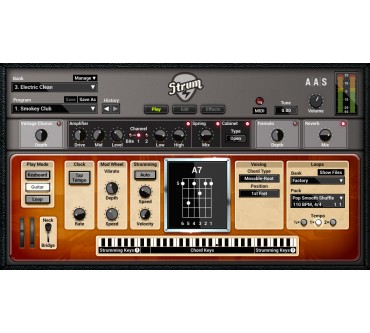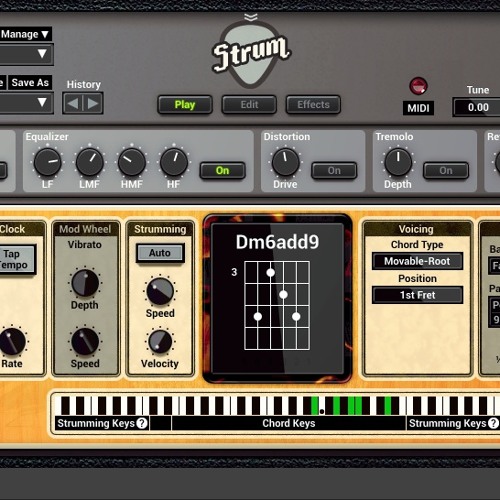
Going into Edit mode, you will see a screen similar to this: We imagine progressive rockers will have fun creating funky loops in 7|4 time! This is, we think, a really cool feature that lets you really tailor the rhythm to whatever you see fit. This is graphically shown below:Įven better, you can drag the MIDI data into your DAW for editing- and essentially create your own loops! An example in a MIDI editor looks like so: You can easily switch between the seven patterns with dedicated key switches, and by a designated octave of keys. In Loop mode, each preset has a set of seven loops that can contain strumming patterns, and there are over 400 loops in total. It had a somewhat rudimentary implementation in the first version, but in GS-2 the capability is well exploited and powerful. Single notes, double stops, and even triple stops are possible, and lead-guitar performances are particularly well suited to this mode. Keyboard mode directly responds on a note-for-note basis to what you play. In this mode, you just play the notes as you normally would as a keyboard player. The strumming capabilities of the original Strum are still present, and this is called Guitar Mode (see our original review for a more thorough description). On the Play screen, there are now three modes of playing: keyboard, strumming and looping. Under the hood, GS-2 now runs natively in 64-bit mode on both Mac and Windows platforms. Like Chromophone 2, the three main pages within the interface are Play, Edit, and Effects the buttons to access each are located in the middle of the screen. And since there are no samples, Strum GS-2 only takes up 75MB of disk space! AAS Strum GS-2 delivers very convincing guitar sounds, presented through a very playable interface.



But it’s the ability to play the guitar sounds in a convincing manner that really separates Strum from the pack. Over the years, there have been quite a few virtual guitar instruments, and hardware synths these days have impressive sounding guitar patches. No longer separate products, acoustic and electric guitars are together in one plug-in, and the user interface is much more streamlined (and should feel quite familiar to users of another virtual instrument we like-AAS Chromophone 2). The playing technique was also innovative, allowing a keyboard player to “strum” guitar chords by means of the left hand doing the fingering and the right hand using individual keys for up strokes and down strokes.įast forward to 2016, and we finally have Version 2. We thought it was a very good sounding virtual instrument, particularly remarkable in that it used no samples and created all of its guitar sounds through modeling technology. Six years ago, we reviewed the first iterations of Strum ( see review here).


 0 kommentar(er)
0 kommentar(er)
